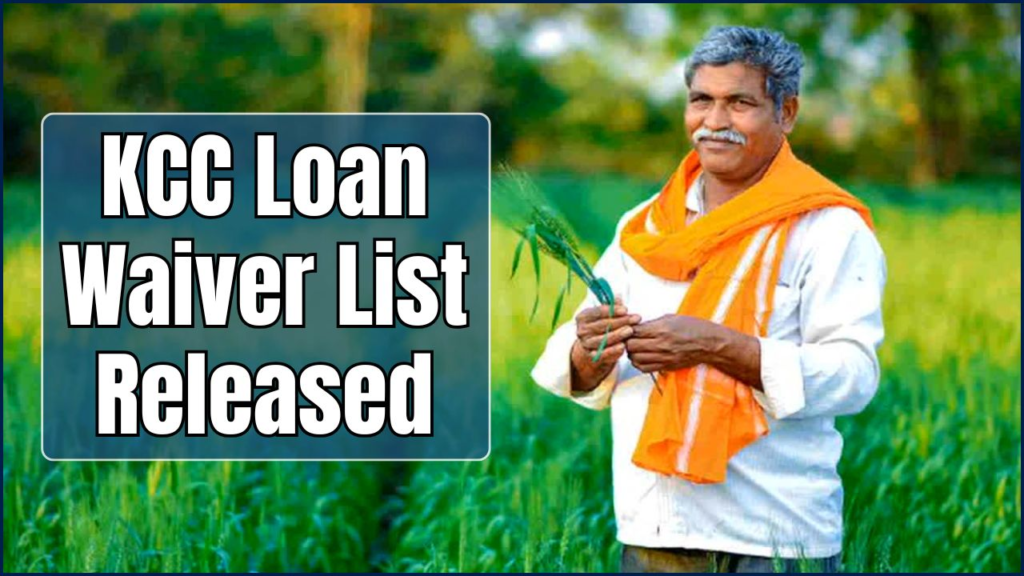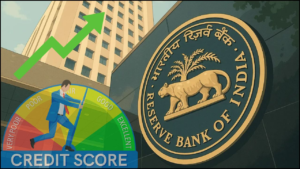
The government has released the Kisan Credit Card (KCC) loan waiver list, offering much-needed relief to thousands of farmers. This move, aimed at easing the burden of agricultural debt, ensures that loans up to ₹1 lakh are waived for eligible farmers. The list is now available online, allowing farmers to check if their loans have been cleared.
What Is the KCC Loan Waiver?
The Kisan Credit Card (KCC) loan waiver scheme is part of India’s long-standing effort to address agricultural distress, particularly among small and marginal farmers. The waiver is offered on loans up to ₹1 lakh, aimed at giving immediate financial relief to those struggling with crop loans. This initiative is designed to help farmers who are unable to repay their loans due to a variety of factors such as poor harvests, natural calamities, and volatile market prices.
This initiative was launched as a way to counter the growing agricultural debt crisis in India, where many farmers are often caught in a cycle of borrowing to meet their agricultural needs, only to fall deeper into debt when they are unable to repay the loans.
Over the years, several states have launched their own variations of the loan waiver scheme, but the KCC loan waiver scheme specifically focuses on supporting farmers who have accessed credit through the Kisan Credit Card system.
How to Check If Your KCC Loan Has Been Waived
Step-by-Step Process to Verify Your Loan Waiver Status
Farmers across the country can now check their loan waiver status online through their respective state portals. Here’s a detailed guide on how to confirm if your loan has been cleared:
- Visit the State Portal: Each state has its own official portal dedicated to KCC loan waiver information. Farmers should begin by visiting the official website of their state’s agriculture or revenue department.
- Enter Your Details: Once on the portal, users will be asked to provide key information such as their KCC loan account number, Aadhaar number, or the bank where the loan was issued.
- Submit and View Results: After entering the required details, submit the form to view your waiver status. Eligible farmers will see a confirmation that their loan has been waived.
- Check Eligibility: It’s important to verify that you meet all the eligibility criteria. Only loans that are standard (not Non-Performing Assets, or NPAs) and meet the deadlines specified by the government are eligible for clearance under the waiver scheme.
For more precise information, farmers should consult the specific guidelines set by their state government.
States Participating in the KCC Loan Waiver
Several states across India have launched their own versions of the KCC loan waiver scheme, each with specific eligibility requirements. Here is a breakdown of some prominent state schemes:
Uttar Pradesh: Kisan Karj Mafi Yojana
Uttar Pradesh has been one of the most active states in implementing the KCC loan waiver. The state’s Kisan Karj Mafi Yojana waives loans up to ₹1 lakh for eligible farmers. The state has made available a detailed list of farmers who are set to benefit from this scheme.
Punjab: Crop Loan Waiver Scheme
In Punjab, the Crop Loan Waiver Scheme benefits small and marginal farmers with up to ₹2 lakh in waived loans. To be eligible, farmers must own less than 5 acres of agricultural land. Punjab’s government has stated that the waiver will directly reflect in farmers’ accounts.
Karnataka: Crop Loan Waiver Scheme
Karnataka’s Crop Loan Waiver Scheme offers waivers up to ₹2 lakh. The state’s government is actively working to clear all dues for eligible farmers under this initiative, aiming to enhance the financial stability of the agricultural community.
Telangana: Crop Loan Waiver List 2024
The Telangana government has announced its crop loan waiver scheme, where eligible farmers can check their status through an online portal. The scheme covers loans up to ₹50,000 for standard accounts.
Historical Context of Loan Waivers in India
The concept of loan waivers for farmers has a long history in India, starting from the 1990s when the country’s agricultural sector faced mounting debt and financial distress. Loan waivers were introduced as a temporary measure to ease the burden on farmers, especially after a series of poor monsoon seasons and crop failures.
The first major loan waiver was announced in 1990, followed by several others over the decades, with varying criteria for eligibility. However, the effectiveness of these schemes has been debated. Critics argue that loan waivers may lead to moral hazard, where farmers rely too much on government assistance and do not improve their financial practices. Conversely, supporters view it as a necessary relief measure, given the poor financial conditions of small farmers who are often unable to access formal credit.
Government and Expert Perspectives on the KCC Loan Waiver
Agricultural Minister’s View
Mr. Ashok Singh, the Union Minister for Agriculture, has stated that the KCC loan waiver scheme will significantly improve the economic standing of farmers in India. “This loan waiver is an important step in the direction of economic justice for farmers who are struggling with unsustainable debt. It is our responsibility to ensure that our agricultural workforce remains viable and resilient,” Singh said in a recent press conference.
Financial Experts’ Opinion
Dr. Ravi Kumar, an economist at the Indian Institute of Economic Growth, pointed out that while the loan waiver is a welcome relief, it is a short-term fix for deeper structural issues in India’s agricultural sector. “We need to focus on building a sustainable credit ecosystem for farmers and ensure better access to insurance, crop diversification, and technology to reduce dependency on government bailouts,” Dr. Kumar explained.
The Impact of the KCC Loan Waiver on Farmers
The KCC loan waiver scheme has been heralded as a significant step in the government’s broader agricultural reform agenda. By alleviating the financial burden on farmers, it is expected to boost agricultural productivity and ensure the long-term viability of farming as an occupation in India.
Positive Impact on Farmers
For thousands of farmers, this waiver is crucial. Farmers burdened by debt often struggle to invest in the next planting season or purchase necessary inputs like fertilizers and seeds. The waiver allows them to reset financially, providing much-needed relief and giving them an opportunity to recover from previous seasons of poor yield.
Long-Term Concerns
Experts caution, however, that loan waivers cannot be the sole solution. Structural reforms in credit access, insurance schemes, and crop diversification strategies are essential for providing lasting relief. “Loan waivers may ease debt, but without addressing underlying issues like poor infrastructure, fluctuating market prices, and unpredictable weather, the benefits will remain short-lived,” said Dr. Yadav.
Challenges in the Implementation of Loan Waivers
While the KCC loan waiver is seen as a boon by many, the implementation process has not been without its hurdles.
Delays and Administrative Bottlenecks
In several states, farmers have complained of delays in the waiver process. Administrative bottlenecks and difficulties in verifying eligibility criteria have led to frustration. Farmers have reported that their names were not listed, even though they met the required conditions, leading to confusion.
Technical Issues
Many farmers also face difficulties in accessing the online portals due to limited digital literacy and poor internet connectivity, especially in rural areas. “While the waiver is much needed, the digital divide prevents many farmers from accessing it,” noted Ramesh Singh, a farmer from Rajasthan.
The Future of KCC Loan Waivers: Sustainability and Solutions
Looking forward, the government must balance short-term relief with long-term solutions. While loan waivers provide immediate relief, the agricultural sector requires more comprehensive financial reforms.
Some suggested measures include:
- Increased Focus on Crop Insurance: Crop insurance can act as a safety net, especially in regions prone to droughts and floods.
- Financial Literacy Programs: Educating farmers about credit, savings, and risk management will help them make better financial decisions.
- Infrastructure Development: Improvements in irrigation, storage, and transportation will enhance productivity and reduce farmers’ dependence on loans.
Fuel Prices Drop Suddenly: Check Today’s Petrol, Diesel, and LPG Rates in Your City
Concluding Paragraph:
The release of the KCC loan waiver list is a step forward in India’s ongoing efforts to support its farming community. While the scheme offers significant financial relief, experts emphasize the need for a more comprehensive and sustainable approach to addressing agricultural debt in the long term. As farmers check their loan status, it remains critical for both state governments and financial institutions to ensure the fair and timely execution of such schemes.
















